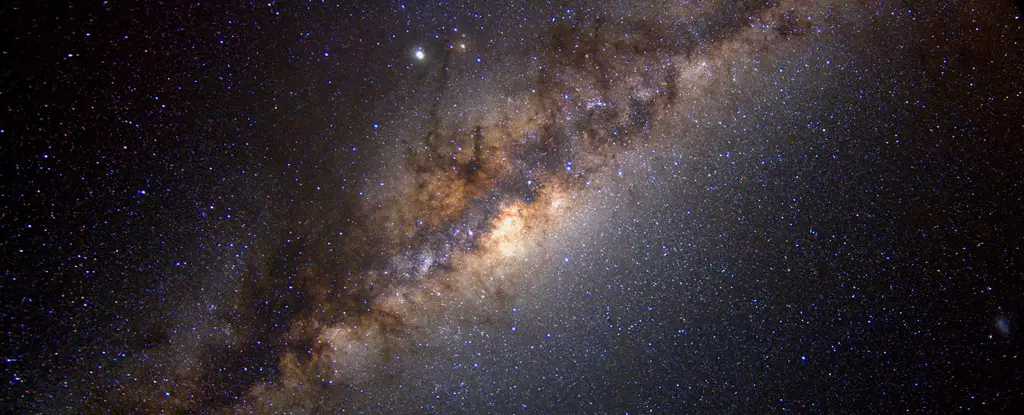Determining the mass of the Milky Way is no easy task. It’s like a single cell in your body attempting to measure your total mass. Despite the difficulty, a recent study has managed to calculate a more accurate mass for our galaxy, and the results are surprising.
One way to estimate a galaxy’s mass is by examining its rotation curve. This involves measuring the speed of stars in the galaxy as a function of their distance from the galactic center. The speed at which a star orbits is directly related to the mass within its orbit. By mapping the mass per radius from a galaxy’s rotation curve, we can obtain an approximate total mass. While we have accurate measurements of the rotation curves for several nearby galaxies, such as Andromeda, our knowledge of the Milky Way is limited.
The Milky Way presents unique challenges in measuring its mass. As we are located within the galaxy itself, our observations are hindered by the vast amounts of gas and dust towards its center. This obstructs our view of stars on the far side. To overcome this, scientists rely on measuring the rotation curve using neutral hydrogen, which emits faint light at a wavelength of approximately 21 centimeters. Although this method is not as precise as stellar measurements, it provides a rough estimate of the Milky Way’s mass.
Scientists have also studied the motions of globular clusters that orbit in the halo of the Milky Way. By observing these clusters, researchers have arrived at an estimate of approximately one trillion solar masses for the mass of our galaxy. However, this value is subject to variation.
The recent study of the Milky Way’s mass is based on the third data release of the Gaia spacecraft. Gaia has collected positions and motions data for over 1.8 billion stars. Although this is only a fraction of the estimated 100-400 billion stars in our galaxy, it provides a sufficient dataset for calculating an accurate rotation curve. Taking advantage of this dataset, researchers in the study were able to determine a precise rotation curve for the Milky Way.
The precision of the rotation curve calculation allowed the researchers to identify the Keplerian decline, which signifies the outer region of the Milky Way where stellar speeds start to decrease in accordance with Kepler’s laws. This decline enabled the team to place an upper limit on the galaxy’s mass. To their surprise, the best fit to the data indicated a mass of approximately 200 billion solar masses, a fifth of previous estimations. Furthermore, the absolute upper limit for the Milky Way’s mass is 540 billion solar masses, meaning that our galaxy is at least half as massive as previously thought.
The revised estimate of the Milky Way’s mass has significant implications for our understanding of dark matter. Dark matter, an invisible and elusive substance, is believed to make up a large portion of a galaxy’s mass. However, the new findings suggest that the Milky Way contains significantly less dark matter than initially presumed, given the amount of known regular matter in the galaxy.
The study outlining the Milky Way’s mass has shed light on the challenges of accurately measuring our own galaxy. With the aid of the Gaia spacecraft’s data, researchers have managed to calculate a more precise rotation curve and arrived at a surprising revelation. The Milky Way is smaller than previously imagined, with a mass that is at least half of what was initially estimated. This finding challenges our understanding of the distribution of mass and dark matter within galaxies, inviting further exploration and investigation.



Leave a Reply